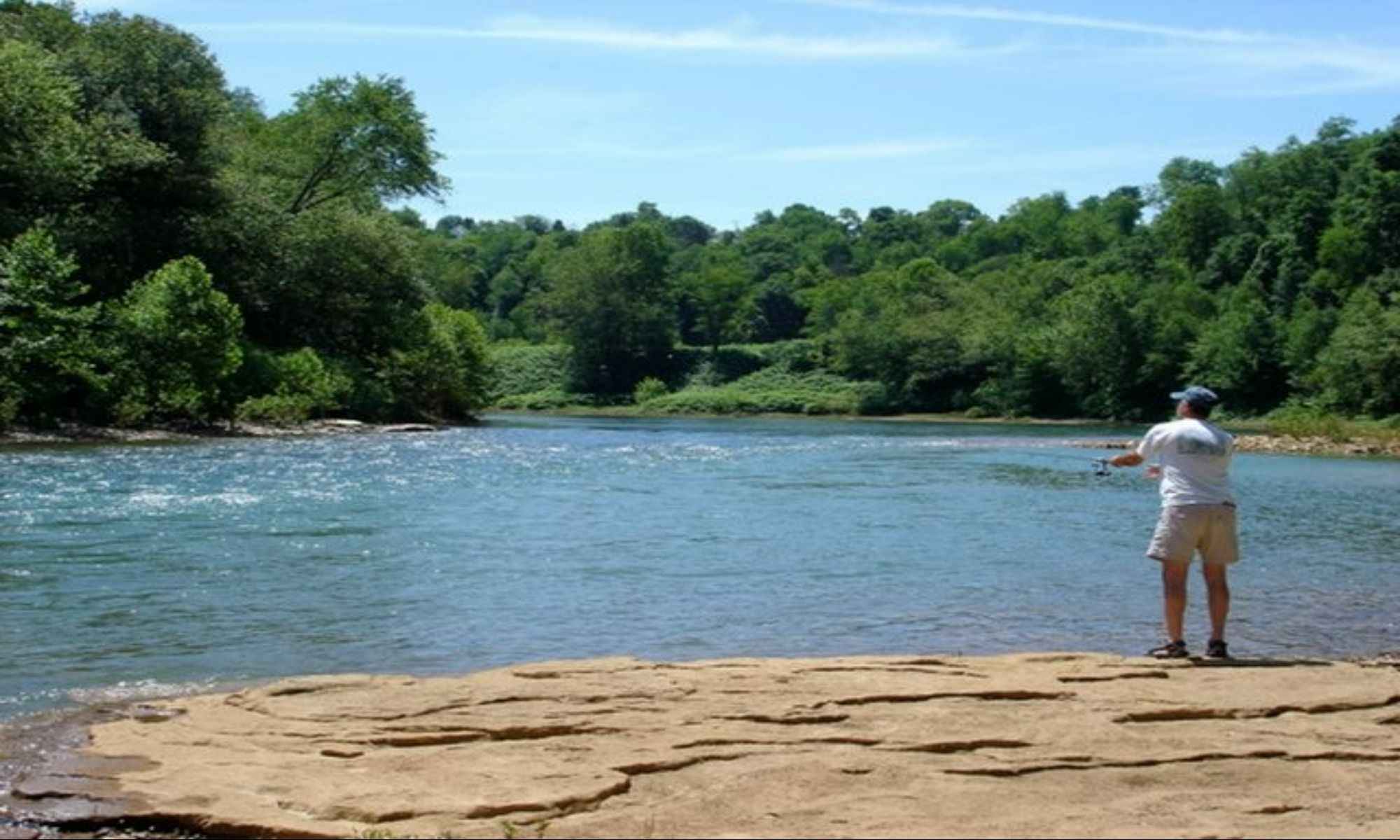Magnet Fishing: Everything You Need To Know
Looking for the ultimate guide to magnet fishing? Learn the techniques to help you scour rivers, ponds, and lakes like a pro with our comprehensive guide!

Magnet Fishing: Everything You Need To Know
Magnet fishing has emerged as an intriguing and increasingly popular recreational activity that combines the thrill of exploration with the potential for surprising discoveries. Similar to traditional fishing, magnet fishing involves casting a powerful magnet into bodies of water, such as rivers, lakes, and canals, to attract and retrieve metal objects hidden beneath the surface. It's like embarking on a treasure hunt, with the excitement of uncovering forgotten relics, discarded artifacts, and even valuable finds.
Magnet fishing's rise in popularity can be attributed to its appeal to both adventure seekers and history enthusiasts. With each throw of the magnet, there is a sense of anticipation, wondering what hidden treasures lie beneath the waters. The activity also provides a unique opportunity to connect with the past, as magnet anglers often unearth items that reveal glimpses into local history, ranging from ancient coins and vintage tools to remnants of long-lost structures. Magnet fishing not only offers an adrenaline-pumping experience but also serves as a way to preserve and appreciate the artifacts of our collective heritage.
Getting Started with Magnet Fishing
Before delving into the depths of magnet fishing, it's crucial to equip yourself with the right tools and knowledge.

Choosing the right magnet:
The key to successful magnet fishing lies in selecting a strong and reliable magnet. Neodymium magnets, known for their exceptional magnetic pull force, are the preferred choice. Consider factors like pull force, size, and shape to match your needs.
Essential equipment for magnet fishing:
Apart from a robust magnet, you'll need a sturdy rope or cord to attach to it. Optional accessories like gloves, a bucket to hold your finds, and a grappling hook for hard-to-reach objects can enhance your magnet fishing experience.
Safety precautions to keep in mind
Prioritize safety during your magnet fishing expeditions. Assess potential risks, wear protective gear, and exercise caution while handling sharp or hazardous objects. Being aware of your surroundings and avoiding crowded areas will ensure an enjoyable and secure experience.
Finding Suitable Locations for Magnet Fishing
Identifying the right spots for magnet fishing is essential to increase your chances of making interesting discoveries.
- Types of bodies of water ideal for magnet fishing: Rivers, lakes, ponds, canals, and even docks are excellent places to try your luck. These locations are often hotspots for discarded or lost items.
- Researching local regulations and permissions: Check local laws and regulations regarding magnet fishing in your area. Some places may require permits or have restrictions to preserve the environment or protect historical sites.
- Popular magnet fishing spots and their characteristics: Conduct research or seek advice from local magnet fishing communities to identify popular and promising spots. Areas with high foot traffic, such as popular fishing spots, bridges, or historical sites, can yield exciting finds.

Techniques and Strategies for Magnet Fishing
Mastering the techniques of magnet fishing can significantly enhance your chances of success. As you embark on your magnet fishing adventures, it's important to understand and employ effective strategies to maximize your finds.
Casting and retrieving the magnet is a crucial skill to develop. When casting, aim for optimal distance and accuracy. By swinging the magnet out into the water, you allow it to sink to the bottom or drag along the bed, increasing the likelihood of attracting metal objects. As you reel in the rope, do so slowly and steadily to cover a larger search area.

To maximize your chances of success, focus on high-traffic areas where objects are more likely to accumulate. Popular magnet fishing spots include bridges, docks, and areas known for recreational activities. These locations are often frequented by people, increasing the odds of finding discarded or lost items. Adjust your technique based on water conditions, such as varying currents or depths, to optimize the reach and effectiveness of your magnet.
Additionally, it's essential to remain patient and thorough during the retrieval process. Take your time and allow the magnet to make contact with various surfaces underwater. The magnetic field of the neodymium magnet will attract and hold onto metal objects within its range. By covering a larger search area and maintaining a systematic approach, you increase the likelihood of discovering interesting items.
As you gain experience, consider experimenting with different casting angles and techniques. Observe the behavior of the magnet underwater and learn to distinguish between natural debris and potential metal finds. By honing your skills and developing a keen eye, you'll become more adept at identifying promising areas and retrieving intriguing objects.
Remember, magnet fishing is not an exact science, and the results can vary from one outing to another. It's a combination of skill, patience, and a little bit of luck. Enjoy the process of exploration and embrace the surprises that await you beneath the waters.
Common Finds in Magnet Fishing
Uncovering intriguing objects submerged beneath the waters is one of the highlights of magnet fishing.
- Types of metal objects you may encounter: Magnet fishing can yield a diverse range of discoveries. Small items like nails, screws, and bottle caps are commonly found. Medium-sized objects such as bicycles, tools, and coins also make regular appearances. In rare instances, magnet anglers have stumbled upon larger and extraordinary finds like safes, firearms, or even historical artifacts.
- Tips for identifying and cleaning found objects: Once you've retrieved an object, it's essential to identify it correctly and clean it if necessary. Implement rust prevention and removal techniques to preserve the condition of metallic items. For potential historical artifacts, consider researching their significance or consulting local experts for further insight.
Responsible Magnet Fishing
Responsible magnet fishing not only ensures the safety of participants but also contributes to the preservation of the environment and historical.
- Proper disposal of trash and unwanted items: As a responsible magnet angler, it's crucial to dispose of any trash or unwanted items you find in an appropriate manner. Separate recyclable materials and discard non-recyclable items in designated waste containers. By leaving the area cleaner than you found it, you contribute to the conservation of natural habitats.
- Reporting potentially hazardous or valuable finds: If you come across potentially hazardous items, such as weapons or explosive devices, it's vital to report them to local authorities immediately. Additionally, if you unearth valuable or historically significant artifacts, consult with relevant experts or authorities to determine the appropriate course of action.
- Environmental considerations and preservation efforts: Respect the ecosystem and refrain from damaging the environment while magnet fishing. Avoid disturbing aquatic habitats, nesting areas, or sensitive ecosystems. Participate in local cleanup initiatives to contribute to the preservation and restoration of waterways.
Legal and Ethical Considerations
To ensure a positive magnet fishing experience, it's essential to understand and adhere to legal and ethical guidelines.
- Understanding local regulations and permits: Research and familiarize yourself with the specific regulations governing magnet fishing in your area. Some regions may require permits or have restrictions on certain water bodies or protected areas. Complying with these guidelines demonstrates respect for the environment and other stakeholders.
- Respecting private property and obtaining permission: Always seek permission from property owners if you intend to magnet fish on private land. Trespassing is not only illegal but also disrespectful to others' rights. Secure necessary permissions and be mindful of boundaries and property lines.
- Ethical guidelines for responsible magnet fishing: Promote ethical conduct within the magnet fishing community. Share knowledge, experiences, and tips with fellow enthusiasts, and encourage a respectful and responsible approach to the activity. Respect the work of archaeologists and historians by reporting potential artifacts and following proper protocols.
Safety Tips and Precautions
Ensuring safety should be a top priority when engaging in magnet fishing activities. By taking necessary precautions, you can enjoy your magnet fishing adventures while minimizing potential risks.
Personal safety measures are crucial to protect yourself during the magnet fishing process. Wear appropriate protective gear, such as gloves and sturdy footwear, to safeguard against potential injuries. When handling sharp or rusty objects, exercise caution and use tools like pliers or gloves for safe removal. It's also important to be mindful of your surroundings and watch out for any hazards in the area.
Water safety is equally important, especially when magnet fishing near bodies of water. Before entering the water, familiarize yourself with the local conditions, such as currents, tides, and water depth. Avoid magnet fishing in areas with strong currents or dangerous underwater structures. Inclement weather can also pose risks, so it's advisable to refrain from magnet fishing during storms or severe weather conditions.
Implementing the buddy system is a wise choice for added safety. Having a partner or a group of magnet fishing enthusiasts with you can provide assistance in case of emergencies or unexpected situations. It's important to communicate and establish clear safety protocols, such as staying within sight of each other and keeping track of everyone's well-being throughout the activity.
Furthermore, familiarize yourself with the basic principles of water rescue and first aid. Knowing how to respond in emergency situations, such as someone falling into the water or sustaining an injury, can be crucial. Consider taking a water safety and first aid course to enhance your knowledge and readiness.
Remember, safety is paramount in ensuring a positive magnet fishing experience. By taking the necessary precautions, being aware of your surroundings, and following water and personal safety guidelines, you can enjoy the adventure of magnet fishing while minimizing risks and promoting a safe environment for everyone involved.
Go With Guidesly
Magnet fishing presents an exciting and rewarding opportunity to explore the depths of bodies of water and unearth hidden treasures. From rusty nails and discarded tools to valuable artifacts and historical relics, the finds can be as diverse as they are fascinating. However, as with any recreational activity, it's important to approach magnet fishing with knowledge, responsibility, and safety in mind.
While the information provided in this blog post equips you with valuable insights and guidelines to embark on your magnet fishing journey, it's crucial to acknowledge the benefits of seeking guidance from an experienced magnet fishing guide, especially for beginners. An experienced guide can offer a wealth of knowledge and practical expertise, ensuring that you start off on the right foot and make the most of your magnet fishing experiences.



